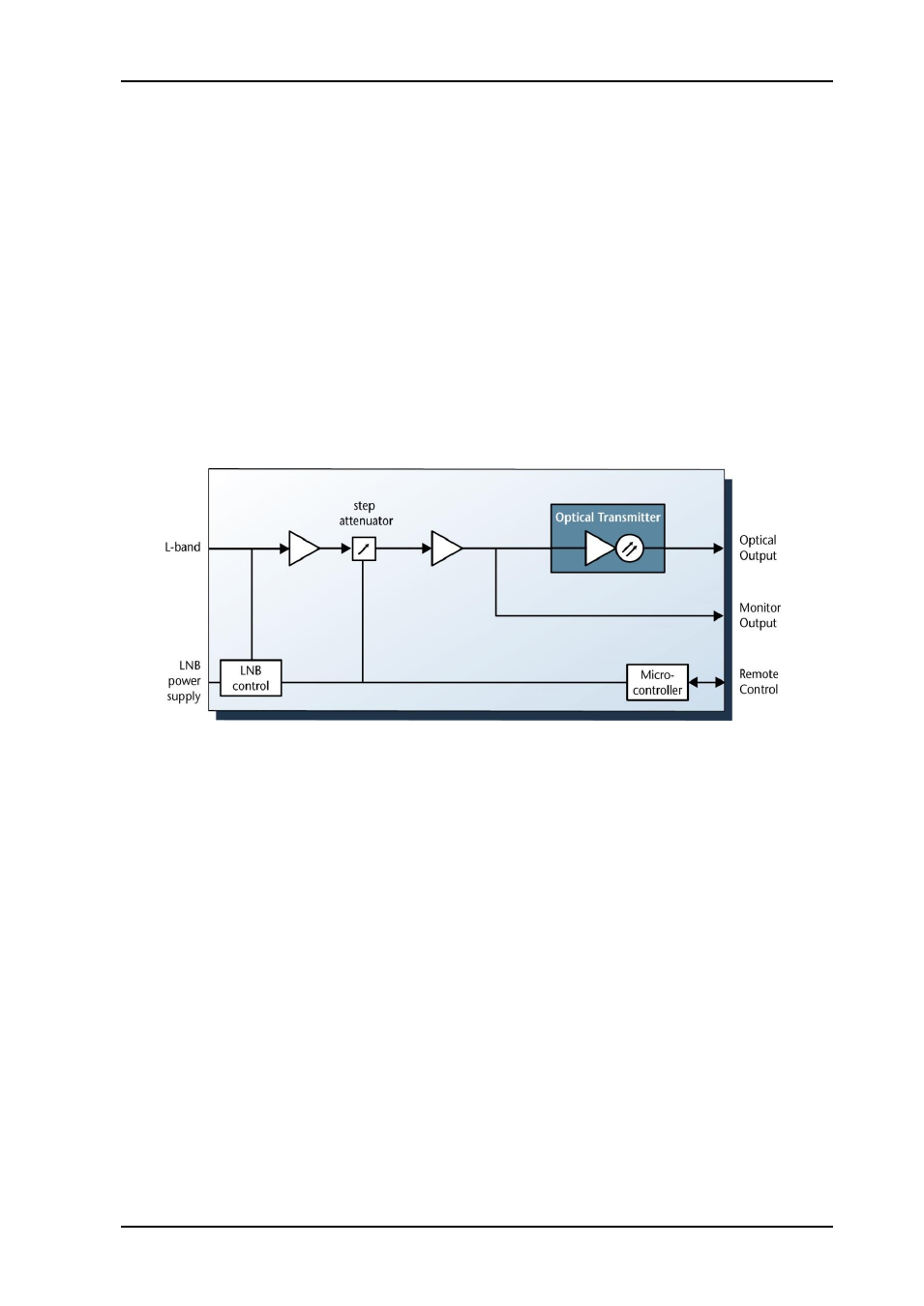1 product overview, 1product overview – Nevion LB-EO Rev.F User Manual
Page 4

LB-EO
Rev. F
nevion.com | 4
1
Product overview
The Flashlink LB-EO is an electrical to fiber optical converter module providing high
performance media conversion for analogue signals with bandwidth from 950 to 2150 MHz.
This state of the art unit offers low noise amplifiers and a high quality laser diode
technology with low distortion and capable of amplifying large signal levels. The attenuator
is a high performance digitally controlled device, giving low distortion and flat frequency
response. The Flashlink LB-EO is therefore the first choice for all optical transport demands
on L-band.
The Flashlink LB-EO converter and the Flashlink LB-OE converter can transport all L-band
signals between 950 and 2150 MHz over long distances using fiber optical transport media.
The optical output comes with a sophisticated wideband laser diode designed to convert the
electrical signal to optical giving very little inter modulation and excellent signal to noise
ratio.
There is also an attenuated electrical monitor output for test and service purposes as well
as a remote control interface.
Figure 1: LB-EO L-band electrical to optical converter.
This L-band link is normally used in conjunction with other equipment like satellite tuners,
LNBs in parabolic dishes etc, and the link performance is dependant of good signal to noise
ratio from the signal source and good noise figure of the receiver equipment. The link
quality is also dependant of the number of channels transferred on the link. For instance,
the link’s signal to noise ratio is reduced with 3dB when doubling the number of the
channels (twice the power).
An optical link will add some noise to the signal. The amount of noise is dependant of the
fiber loss, the satellite receiver sensitivity, number of channels and the total power level of
the signal. The combination if analogue and digital satellite signals is also important. Many
analogue satellite signals (which tend to have higher power), will reduce the signal to noise
ratio on the digital signals. This is because the link’s power must be reduced according to
the total power of the link.
Noise figure of the link is a number usually in dB that states how much the signal to noise
ratio (S/N ratio) is reduced from the input to the output. If the S/N ratio from the dish is X
dB, the noise figure on the link is Y dB, the S/N ratio on the output will be X-Y dB.
Dependant on the application (fiber loss, total power on signal and power of the laser), one
link will typically add 4-5dB noise for fiber distances less than 3000 meters.
A coaxial cable will attenuate more on higher frequencies than lower. If the attenuation on
2GHz is more than the noise figure for the L-band link, there will be a system improvement
